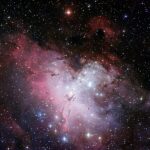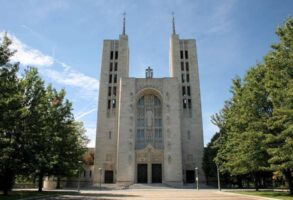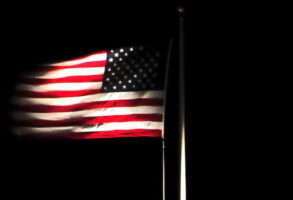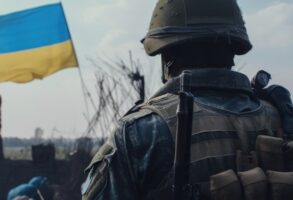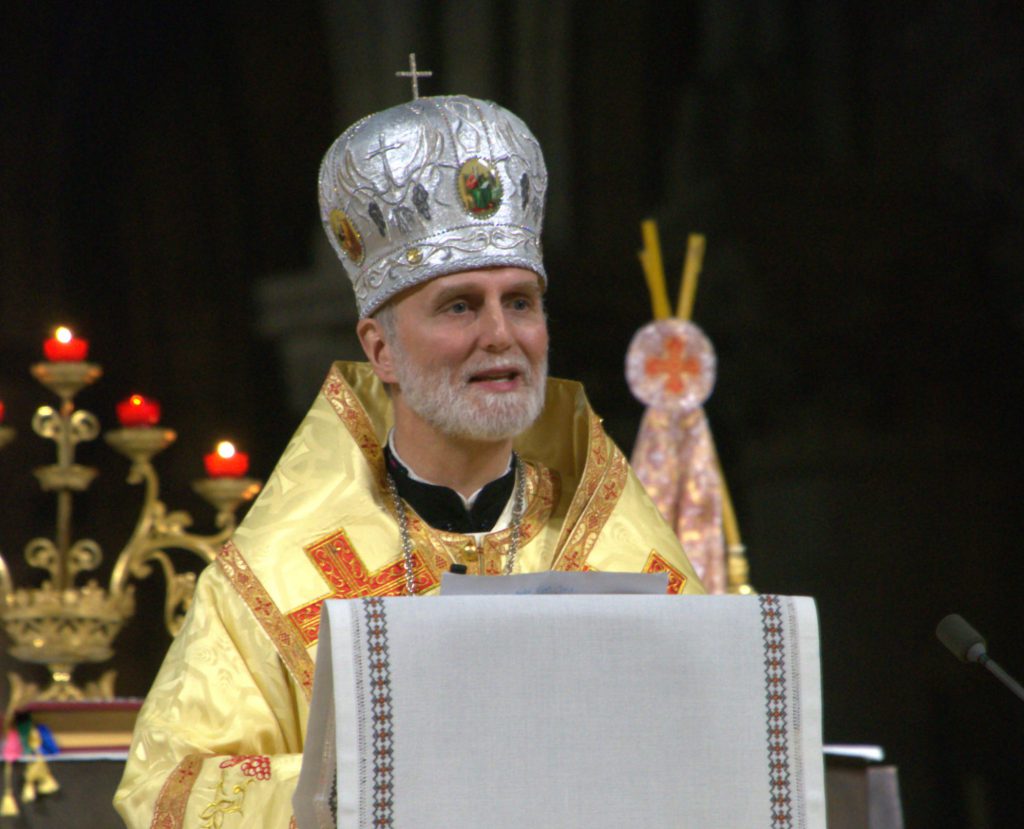
Published June 6, 2019
The Ukrainian Greek Catholic Archeparchy of Philadelphia celebrated the enthronement of its new Metropolitan-Archbishop, Borys Gudziak, on June 4. The ceremony in the archeparchy’s Cathedral of the Immaculate Conception was preceded by two days of programs for pilgrims who had come to Philadelphia from all over North America. The celebrations began Sunday afternoon with an exhibition of icons written on the wooden covers of ammunition boxes (some of them dating from Soviet times and others from the ongoing war in the Donbas region of eastern Ukraine) by two Ukrainian artists, Sofia Atlantova and Oleksandr Klymenko. The Sunday program also included the lecture that follows.
It is a distinct honor and a great personal pleasure to be invited to participate in the ceremonies marking the enthronement of His Grace, Borys Gudziak, as Metropolitan-Archbishop of Philadelphia. Metropolitan Borys and I met more than thirty years ago in circumstances that seemed quite random then, but which I think we have both come to regard as providential, as the friendship begun at the reception following the baptism of a mutual friend’s child has grown and as we have worked together in a variety of venues and ways for Christ and his one Church. To cite just one personal memory: I had the pleasure of giving an inscribed copy of then-Father Gudziak’s book, Crisis and Reform: The Kyivan Metropolitanate, the Patriarchate of Constantinople, and the Genesis of the Union of Brest to Pope John Paul II over dinner one night in 1999; and I am quite sure that that great saint, a voracious reader with a deep love for Ukraine, started reading it later that evening, right after he showed me out of the papal apartment.
I am also deeply touched that the Ukrainian Greek Catholic Archeparchy of Philadelphia should have invited me, a Latin-rite Catholic, to participate in this week of festivities by speaking on “Twentieth Century Witness and Twenty-First Century Mission: Eastern Catholic Churches and the Universal Church.” My presence here is a sign of the fraternity and solidarity that characterize the one, holy, catholic, and apostolic Church, which now breathes freely with both its Latin and Greek lungs. And who knows? It may also be a sign of reconciliation, such that Philadelphians have forgiven me, a native Baltimorean, for the thumping my Orioles laid on your Phillies in the 1983 World Series.
When we think of the witness of Eastern Catholics in the twentieth century, and particularly of the witness of the Ukrainian Greek Catholic Church, our minds naturally turn first to the great men and women who held firm to the Catholic and apostolic faith during the starvations and slaughters of the mid-twentieth century, and during the communist persecution that followed. We think of the New Ukrainian Martyrs beatified by John Paul II during his pastoral pilgrimage to Ukraine in 2001; we think of the many martyrs whose names are not in the Church’s liturgical calendar, but who nonetheless “washed their robes and made them white in the blood of the Lamb” (Revelation 7:14) and now reign with him forever. We think of the Venerable Andrey Sheptytsky, and pray that his beatification is not long delayed. We remember the Servant of God Josyf Slipyj, whose witness in the Gulag inspired novelist Morris West to create a fictional—and perhaps even prophetic—Ukrainian pope in The Shoes of the Fisherman. In my commencement address at the Ukrainian Catholic University in 2013, I challenged the graduates to be faithful to the martyrs whose sacrifice laid the foundation on which UCU was built. That challenge applies equally to all Ukrainian Greek Catholics wherever they live, in Ukraine or in the diaspora, just as it applies to every Catholic, whatever rite they practice.
It was the first great Christian thinker to write in Latin, the early third-century North African theologian Tertullian, who, in his Apologeticus, wrote “Plures efficimur, quoties metimur a vobis; semen est sanguis christianorum (Whenever you mow us down, we multiply; the blood of Christians is seed).” And while many Catholics, east and west, on all continents, bore witness in the twentieth century to the truth of Tertullian’s maxim that the blood of martyrs is the seed of the Church, the Greek Catholic Church of Ukraine bore a particularly impressive witness.
In thinking of the Ukrainian Greek Catholic Church’s witness in the twentieth century, though, we should remember more than blood and martyrs; we should think of a Church that became a safe deposit box of national identity, memory, and culture when malign forces sought to erase the very idea of “Ukraine” from the world’s vocabulary. We remember how Metropolitan Borys and an intrepid band of brothers and sisters realized the dreams of Andrey Sheptytsky and Josyf Slipyj and built a great Catholic center of higher learning un Ukraine—a university that would deepen and broaden the culture that Sheptytsky in particular did so much to both preserve and nourish.
The Ukrainian Greek Catholic Church of the twentieth century was not only a Church that taught the world Church how to die nobly; it also taught the world Church how to live as a culture-forming counterculture, bringing new life to physically devastated lands and healing morally devastated populations, demonstrating the power of the gospel to make whole again what had been so badly broken by evil incarnate. And so we also remember with gratitude a man who embodied that capacity of the Church to be an agent of cultural renewal in a singular way: His Beatitude Lubomyr Husar, whose work and witness in the independent Ukraine that emerged from under the rubble of Soviet communism made him the most revered and respected leader in the country.
The relationship between Eastern Catholics and the world Church has not always been an easy one: even in these United States, where the unique Greek Catholic way of being Catholic was not always welcomed by some in the dominant Latin-rite Church. We thank God that those days are over, that the Church is once again breathing with both its eastern and western lungs, and that we can learn from each other and enrich each other’s experience of being the Body of Christ. What, then, are the particular gifts that Eastern Catholics bring to the universal Church in the 21st century? Permit me to suggest six.
The first is the gift of adoration. The great interior disloyalty of the modern world (as Romano Guardini put it) is its failure to worship truly because of its conviction that humanity is self-sufficient. Yet a world without true worship—the worship of that which is worthy of worship—is a claustrophobic world: a world without windows, doors, or skylights; a world that becomes suffocating; a world that, sooner or later, becomes nihilistic. And on the way to nihilism, a world without true worship substitutes false gods for the one true God, in order to satisfy the innate, built-in human desire to worship. We have just recalled the bloodlands of eastern Europe, including the Holodomor and the massacres of the Holocaust committed on Ukrainian soil; those slaughters were, one and all, the result of the worship of false gods.
That is why the adoration-centered liturgy celebrated by the Eastern Catholic Churches is so important for the world Church, and indeed for the world. As a Latin-rite Catholic, I am a firm believer in the liturgical reforms of the Second Vatican Council, properly implemented. But that implementation has been, as you know, uneven at best, and its unevenness almost always involves a lost sense of the necessity of adoration. So there is much that Latin-rite Catholicism can learn from the Eastern Catholic churches as we continue the reform of the liturgical reform in the West.
The primary truth we Latin-rite Catholics can learn from our eastern brethren is that the liturgy is a celebration of the presence of the living Christ among us—a foretaste of the Wedding Feast of the Lamb in the New Jerusalem, as described by St. John in the last chapters of the Book of Revelation. Eastern Catholics also remind the rest of the world Church that Catholic worship is explicitly Trinitarian. Indeed, scholars of the first Christian centuries tell us that it was the invocation of the thrice-holy God in the primitive liturgy that led over time to the development of the Church’s Trinitarian theology and doctrine; thus the omnipresence of the Trinity in Eastern Catholic worship invites the entire world Church to enter more deeply into the self-giving love and mutual receptivity of Father, Son, and Holy Spirit. Finally, Eastern Catholic worship reminds the world Church that our liturgical life places us in a new and different time zone. Or as patristics scholar Robert Louis Wilken puts it in The Spirit of Early Christian Thought, “liturgy is always in the present tense,” but this is a different kind of “present.” In the liturgy, and especially in its Eucharistic remembrance of the Last Supper and the Passion of the Lord, “the past becomes a present presence that opens a new future.”
The second gift the Eastern Catholic Churches offer the rest of the world Church is the gift of iconography. And by this, I do not mean simply the beautiful icons that now adorn many Latin-rite Catholic churches and homes. I mean that your Church, in its icons, offers the world Church a powerful reminder that, as Dr. Wilken put it, “the way to God passes through things that can be seen and touched.” This is, of course, at the very foundation of the faith. In Acts 10:41, Peter describes the first witnesses to the Resurrection—that history-shattering event at which the Kingdom of God became manifest in the world and its story—as those “who ate and drank with him after he rose from the dead.” But it is a truth of which we need constant reminding today.
For we live in a gnostic culture, in which everything is plastic and malleable, subject to change by human will—even our embodiedness as men and women. Despite (or perhaps because of) the materialism of the postmodern West, our culture is one that in fact denies any significance to the material givenness of things—and that denial poses a sharp challenge to Catholics, for whom material things (like water at baptism, bread and wine in the Eucharist, the oil of confirmation, marital love and fidelity) are the means by which God’s own life, the life of grace, flows into the world. Icons can help us all meet the challenge of this new Gnosticism, reminding us as they do that what lies between this world and the world of divine life and grace is not a fixed border, and still less a wall, but something like a membrane, through which nutrients flow from the Source of life to us.
Icons are also a gift to the world Church from Eastern Christian traditions because their beauty opens up the possibility that a world that has lost touch with the true and the good might get a grip on truth and goodness again. As the Swiss theologian Hans Urs von Balthasar reminded the world Church, the transcendental of beauty can be a path back to the true and the good. When we see something beautiful, we know that it’s, well, beautiful; it’s not “maybe beautiful.” And we know that that beauty is good: It’s not “good for me,” or “good for you,” but good, period. In nurturing the arts of Christian iconography, then, the Eastern Catholic Churches do essential service to a confused postmodern culture, as beauty invites an exploration of the permanence of truth and goodness in the order of things.
The Eastern Catholic Churches also do us all a service by what I might call the gift of “theosis.” Less than forty-eight hours from now, Latin-rite Catholics will get an annual shock from the Office of Readings in the Liturgy of the Hours, where they will read this from St. Basil the Great’s Treatise on the Holy Spirit:
Through the Spirit we become citizens of heaven, we are admitted to the company of the angels, we enter into eternal happiness and abide in God. Through the Spirit we acquire a likeness to God; indeed, we attain what is beyond our most sublime aspirations—we become God.
And here, in the work of a fourth-century Cappadocian bishop, is the definitive rebuttal of the false charges laid by those 19th-century atheistic humanists who declared the God of the Bible the enemy of human maturation, and sought to throw the God of the Bible out of history in the name of human liberation.
The hard fact, which confronts us daily, is that the degraded humanism of our time—which has been deeply influenced by 19th-century thinkers like Comte, Feuerbach, Marx, and Nietzsche (while rarely rising to their level of intellectual sophistication)—has dumbed down the very idea of the human. On this view, each of us is simply a twitching bundle of desires; all of those desires are equal; the achievement of those desires is the full meaning of happiness and fulfillment; and the role of the state is to clear the path to the satisfaction of our desires. But there is nothing mature here, nothing noble, nothing truly human. This is infantilism, and when it becomes cultural common wisdom it leads to any number of horrors—including, to take a local example, Kermit Gosnell and his slaughterhouse of the innocent unborn.
In challenging this dumbed-down, degraded, and ultimately lethal concept of the human person, the Catholic Church must always recall the teaching of the Second Vatican Council in paragraph 22 of the Pastoral Constitution on the Church in the Modern World: On the holy face of Christ, we meet both the Father of mercies and the truth about our humanity. Jesus Christ, crucified and risen, reveals the full dignity and eternal destiny of the human person—and in affirming Jesus as Lord, as in celebrating the Solemnity of his Ascension, we affirm that this human stuff of which we are made now lives within the life of the Trinity, within the life of God.
We are made for glory, not simply for transient satisfaction. We are made for God, and God has so entered into our lives through the sacraments that we can, with St. Basil the Great, speak about our being divinized. By reminding the world Church of the great theme of “theosis” among the Eastern Fathers, the Ukrainian Greek Catholic Church and the other Eastern Catholic Churches help the world Church lift postmodern humanity out of the playpen of self-absorption, as Catholicism calls the twenty-first century to live in the truth that we are far, far greater than we think—not because of our merits, but because of our redemption.
And then there is the gift of converting culture. Despite the burdens of the office, John Paul II had some fun being pope, and I think he rarely had more fun than when he named Sts. Cyril and Methodius the co-patrons of Europe along with St. Benedict. That gesture was yet another way of John Paul reminding the world Church that the Christian East had much to teach the Christian West—in this particular case, about the inculturation of the gospel. That the brothers from Thessaloniki initiated the process that led to what we now know as Old Church Slavonic was not only a shrewd tactical move in evangelizing the Slavic peoples; it was a culture-shaping initiative that displayed the Church’s capacity to preserve and develop what is best in a people’s heritage. It was also a demonstration of the true catholicity or universality of the Church, which until then had imagined there to be only three languages suitable for the things of God: Hebrew, Latin, and Greek. When Pope Nicholas I received the Slavic Scriptures from Cyril and Methodius and placed them on the altar of the Basilica of St. Mary Major in Rome, Catholicism took a giant step toward being more fully “catholic.” And an essential link between the “two lungs” of what we would eventually know as the civilization of Europe was forged.
This mission of healing and converting culture has been continued in our time by the foundation of the Ukrainian Catholic University—an institution of higher learning explicitly dedicated to the healing of a culture of mistrust and corruption caused by the totalitarian disasters of the 20th century. UCU is not a credential mill, although the credentials it grants its students are perhaps the most respected in the country. It is not just a place for punching one’s ticket to a well-paying job. It is a genuine community, where students and faculty together are building the kind of culture of truth, goodness, and honesty that can sustain a free and prosperous Ukraine in the future. Cyril and Methodius would, I’m sure, be pleased; so would Andrey Sheptytsky and Josyf Slipyj, as the world Church looks, as I hope it will, to the Ukrainian Catholic University for a model of what a genuinely Catholic university can be, and to the Greek Catholic Church of Ukraine for an example of what it means to be a public Church, a culture-forming Church, that is not a partisan Church.
And fifth, there is the gift of the Holy Spirit. That must sound a little odd, as we know that the Spirit was given to the entire Church. But it is no secret that Latin-rite Catholicism tends to be, de facto if not doctrinally, binitarian, celebrating the gift of the Holy Spirit at Pentecost—and then largely forgetting the Spirit for another year.
Western theology’s focus on the will may have played a part in this tacit forgetting that it is only in the Spirit that we can say “Jesus is Lord.” But as St. Gregory of Nyssa put it, there is no part of Christian faith that is “not covered by the Holy Spirit. That is why the confession of the Son’s Lordship is made in the Holy Spirit by those who receive him, the Spirit coming….to all those who approach the Son in faith.”
St. Thomas Aquinas taught Latin-rite Christianity that, for God to end the world, God would not have to do something; God would have to stop doing something. That sustaining creativity of God is the Holy Spirit, and the Catechism of the Catholic Church cites the Byzantine liturgy, the Troparion of Morning Prayer for Sundays of the second mode, to make the point: “It belongs to the Holy Spirit to rule, sanctify, and animate creation. For he is God, consubstantial with the Father and the Son….Power over life pertains to the Spirit, for being God he preserves creation in the Father through the Son.”
The Holy Spirit is also the bond of unity within the Church—a bond that, whatever its expressions in human solidarity and friendship, is, in essence, divine, because it is a work of grace. The Eastern Catholic Churches’ intense consciousness of the Holy Spirit thus reminds the rest of the world Church that the Church is not of our making but of God’s, and that when we make the Church in our own image and by our own lights we make a mess—or worse.
And while this list of gifts could be extended, let me conclude by citing the gift of the Fathers as a great Eastern Catholic patrimony that is crucial in the ongoing reform of the world Church. Western Christianity suffers today from “presentitis,” too often misconstruing Vatican II’s call to discern the “signs of the times” as a summons to imitate contemporary culture and accommodate to its mores. Eastern Christianity, by contrast, lives, worships, and thinks in a spiritual world in which Athanasius and John Chrysostom, Gregory Nazianzen and Basil, Gregory of Nyssa and Maximos the Confessor are vibrant, living presences, not books on a library shelf. From these great Eastern teachers of the Church, the entire world Church of the twenty-first century can learn the skills of expository preaching: preaching that begins with the conviction that the Word of God, the Logos, lives in the Word of God, the Holy Scriptures; preaching that invites the People of God to see the world through biblical lenses. And that kind of seeing is essential to curing the self-absorbed myopia of postmodernity and the moral astigmatism that defines wrongs as rights.
Eastern Catholicism’s immersion in the Fathers also teaches the world Church to practice the ecumenism of time, giving a voice in the current deliberations of the Church to those who have gone before, and whose theology and preaching have passed the test of time in proving their spiritual fecundity. At a moment when too much of the Church in the West imagines that theology began anew some two hundred years ago—or even some fifty years ago—such that what went before is of only antiquarian interest, the gift of the Fathers is a precious offering from the Eastern Catholic Churches to all of Catholicism, even as that patristic heritage is the foundation on which the theological development of the Ukrainian Greek Catholic Church and other Eastern Catholic communities unfolds.
Finally, what of the future?
I believe the basic challenge facing the Archeparchy of Philadelphia and the Eastern Catholic Churches throughout the United States is identical to the challenge faced by the Archdiocese of Philadelphia and the rest of Latin-rite Catholicism in this land: the challenge of living what John Paul II called the “New Evangelization.”
Living the New Evangelization begins with recognizing that the days when Catholic faith was transmitted by ethnic or cultural heritage are over in the West, including the United States. Thirty years from now, perhaps twenty, no one living the life of a Latin-rite Catholic in America is going to answer the question, “Why are you a Catholic?” by answering, “Because my great-grandmother was born in County Cork….” Or the south of Bavaria. Or Palermo. Or Guadalajara. Or Cracow. Or Lisieux. Or in rural Portugal or Spain. Similarly, no Ukrainian Greek Catholic of the mid-twenty-first century is going to be able to answer the question “Why are you a Catholic?” by reference to their Ukrainian grandparents or great-grandparents, their suffering, and their faith. Those days are over.
Why? Because we live in a culture that is not neutral to the faith but hostile to the faith. And because that is the cultural air that surrounds us and which we cannot help inhaling, Catholicism by osmosis—Catholicism conveyed by ethnic or cultural inheritance, “DNA Catholicism,” if you will—is finished. The Catholicism of the future, whether it draws its liturgy, spirituality, and polity from the Christian West or the Christian East, will be a Catholicism that is deliberately chosen and embraced, not a Catholicism that is inherited. And Catholicism will only be chosen and embraced when it is offered and proposed.
That means that this Archeparchy and its suffragans, like the Archdiocese of Philadelphia and the entire Latin-rite Church throughout the United States, must become once again a missionary enterprise: a Church in which everyone understands himself or herself to be a missionary disciple who was given the Great Commission at baptism; a Church in which every one of those missionary disciples understands that he or she is entering “mission territory” every day—at home, at work, in the neighborhood, in our lives as citizens, and in our lives as consumers.
This “evangelical” way of being Catholic is that to which the Second Vatican Council, as authoritatively interpreted by John Paul II and Benedict XVI, summoned the world Church. It is the Church that has heard John Paul II’s call, when closing the Great Jubilee of 2000, to “put out into the deep” (Luke 5.4): to leave the shallow and brackish waters of institutional maintenance and sail into the often-turbulent waters of the postmodern world for a great catch. It is the Church that has heeded the call of Pope Francis to missionary discipleship in Evangelii Gaudium. The Ukrainian Greek Catholic Church brings to that global enterprise all the modern experience and all the ancient gifts I’ve outlined here; it also offers the world Church a living example of the truth that the only Catholicism that can attract 21st-century men and women to friendship with the Lord Jesus Christ and incorporation into his body, the Church, is Catholicism-in-full.
Those who kept the Ukrainian Greek Catholic Church alive in Ukraine when it was the largest illegal and underground religious community in the world did not do so by preaching or practicing what I call “Catholic Lite.” They may have been deprived of their churches and schools; but no one could take the full symphony of Catholic truth away from them. That symphony empowered the heroic sacrifice that has recreated the Church in Ukraine, and that should inspire the Ukrainian Greek Catholic Church of this Archeparchy and its suffragans.
Perhaps the greatest challenge you will face as a Church of the New Evangelization is the challenge of inspiring young people to embrace friendship with the Lord Jesus, who is the answer to the question that is every human life. In the new Metropolitan of Philadelphia and in His Beatitude Sviatoslav Shevchuk, the Major-Archbishop of Kyiv-Halych, however, you have been blessed with shepherds and leaders with long experience of forming living and vibrant Christian communities among young people, often under very difficult material circumstances.
Here in the United States, of course, the issue is not material resources; it is vision and will. The Venerable Andrey Sheptytsky and the Servant of God Josyf Slipyj were men of vision and will. Through their intercession, and inspired by their example, the Ukrainian Greek Catholic Church of Philadelphia and its sister churches throughout the United States can be a true light to the nations, setting the world ablaze with the fire of the Spirit, healing a wounded culture, and offering 21st-century humanity a noble vision of human possibility that leads to genuine beatitude through friendship with Jesus Christ, the Risen Lord and King of the Universe. Glory be to him forever.
George Weigel is Distinguished Senior Fellow of Washington, D.C.’s Ethics and Public Policy Center, where he holds the William E. Simon Chair in Catholic Studies.




